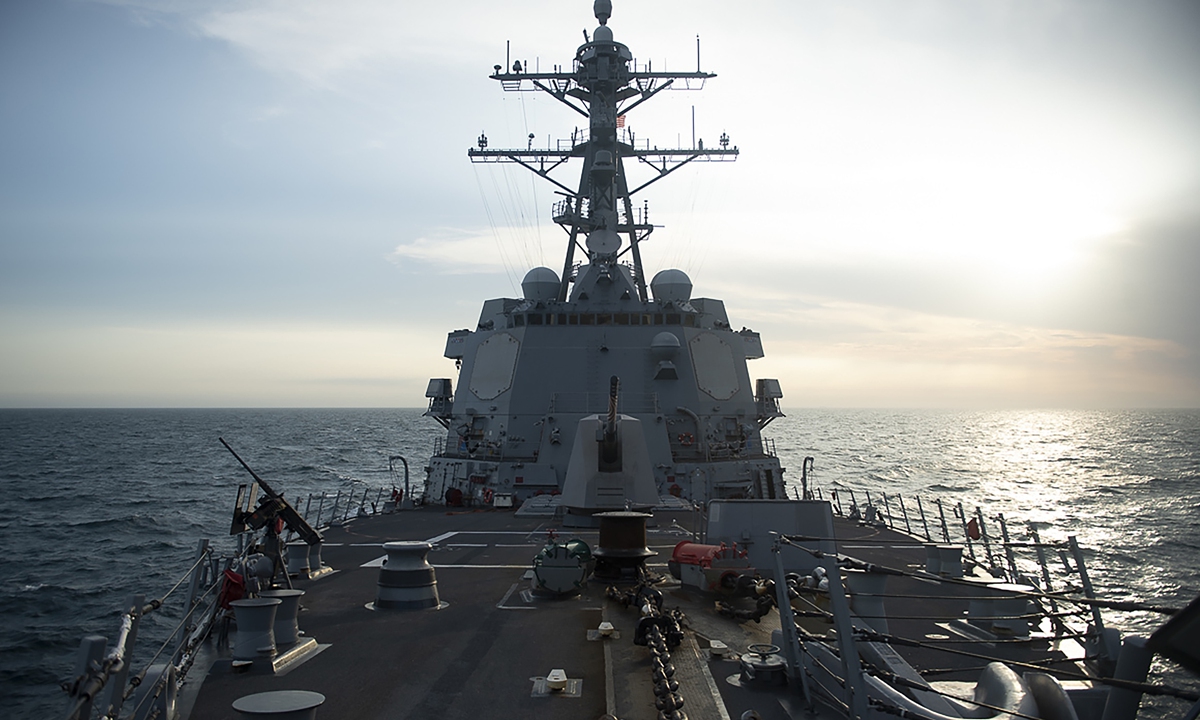(Source:Global Times,2024-02-05)

The guided-missile destroyer USS Sampson sailed through the Taiwan Straits on April 26, 2022. Photo:VCG
The Japanese Self-Defense Forces and the US military named China as a hypothetical enemy for the first time in their joint command post exercise, Japanese government sources said Sunday, according to Japanese media. Experts noted that there is significant difficulty in putting these operational plans into practice for the US and Japan and will not alter the outcome of the Taiwan question.
The computer simulation exercise, which began on February 1 and is slated to be held through Thursday, envisions an emergency on the island of Taiwan, Japan's Kyodo News reported on Sunday, noting that a provisional name was previously used when referring to an enemy.
Japan's Defense Ministry is believed to have classified the scenario as a specially designated secret under the country's secrecy law, the report said.
Chinese experts pointed out that the command post exercise is actually the same as the military simulation exercises. The scale of these exercises can be quite large because they are conducted on paper, allowing for the mobilization of more forces compared to real-troop exercises. However, there is significant difficulty in putting these operational plans into practice for the US and Japan, as their joint operational capabilities are limited, and their hypothetical enemy is not a weak country but a world power.
It is not surprising that they consider China a hypothetical enemy, Song Zhongping, a Chinese military expert and TV commentator told the Global Times on Monday. The US is building its Indo-Pacific strategy which targets China as a hypothetical enemy. The US cannot confront a powerful opponent alone, so it rallies allies and builds so-called group strike capability. This reflects that the US highly lacks confidence. It is evident that the US is more focused on consuming its allies in weakening its opponents to achieve its own goals, Song said.
The US and Japan have multiple joint operation plans envisioning emergencies, with a draft on the island of Taiwan completed at the end of 2023, Kyodo News reported.
The results of the current Keen Edge exercise will be reflected in the final plans to be compiled by the end of this year, while troops are expected to perform a live-action demonstration of the Keen Sword drill around 2025 to verify its efficacy, the Japanese report said.
The countries had previously utilized maps that slightly differed from the topography of actual countries to avoid backlash in the event the plans were leaked, although the current exercise utilized unaltered versions, according to the report.
Japan and the US began conducting joint drills in 1986, with the two countries holding Keen Edge and Keen Sword exercises roughly every other year, Kyodo News said.
Following the regional election in Taiwan, this type of exercise will certainly have a negative impact on regional peace and stability, Wang Guangtao, an associate research fellow with the Center for Japanese Studies at the Shanghai-based Fudan University, told the Global Times. Considering China a hypothetical enemy will not alter the outcome of the Taiwan question, Wang said.
The US has always wanted to play the role of a hegemon in the Indo-Pacific region, while Japan is in a subordinate position to the US hegemony. Therefore, the military cooperation between Japan and the US, especially military exercises, essentially aims to maintain the US' hegemonic position in the Asia-Pacific region, Wang said.






